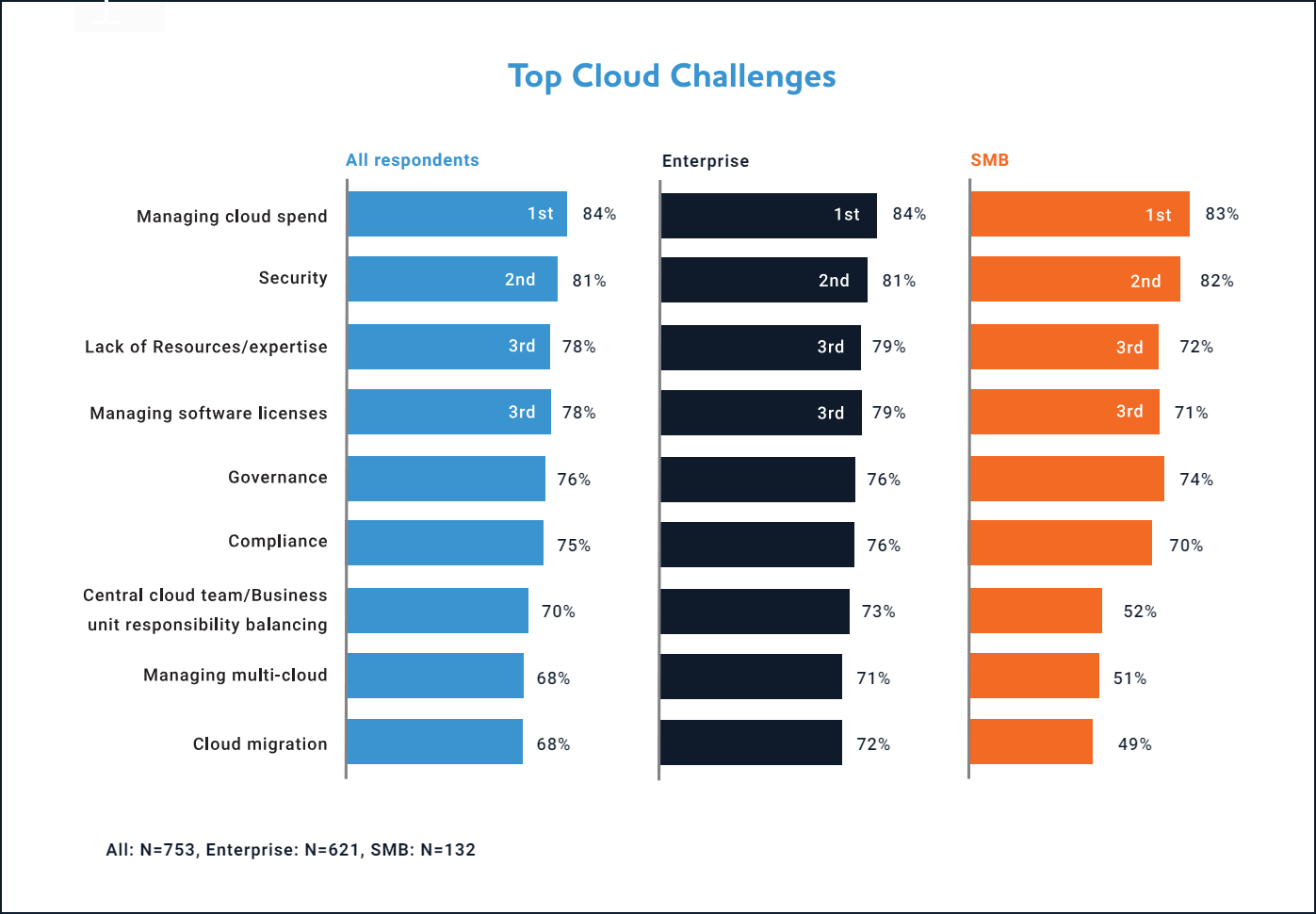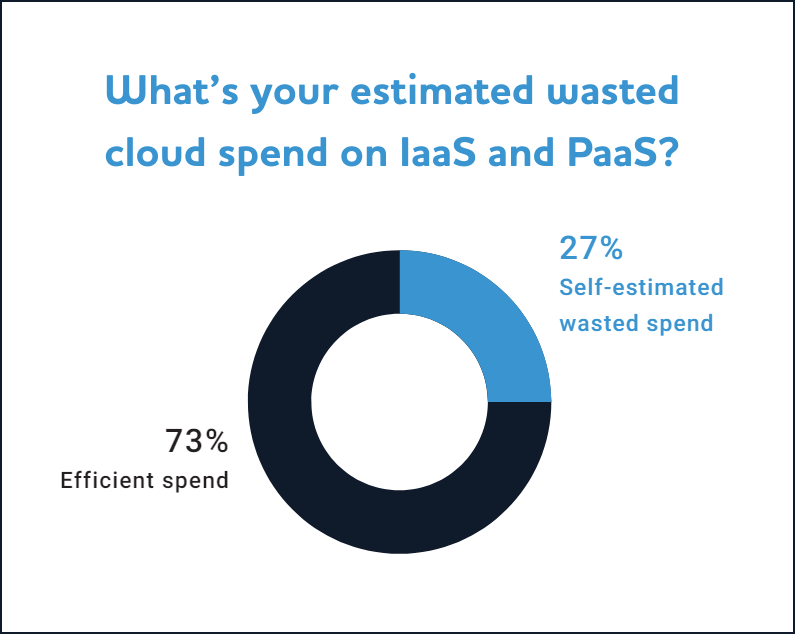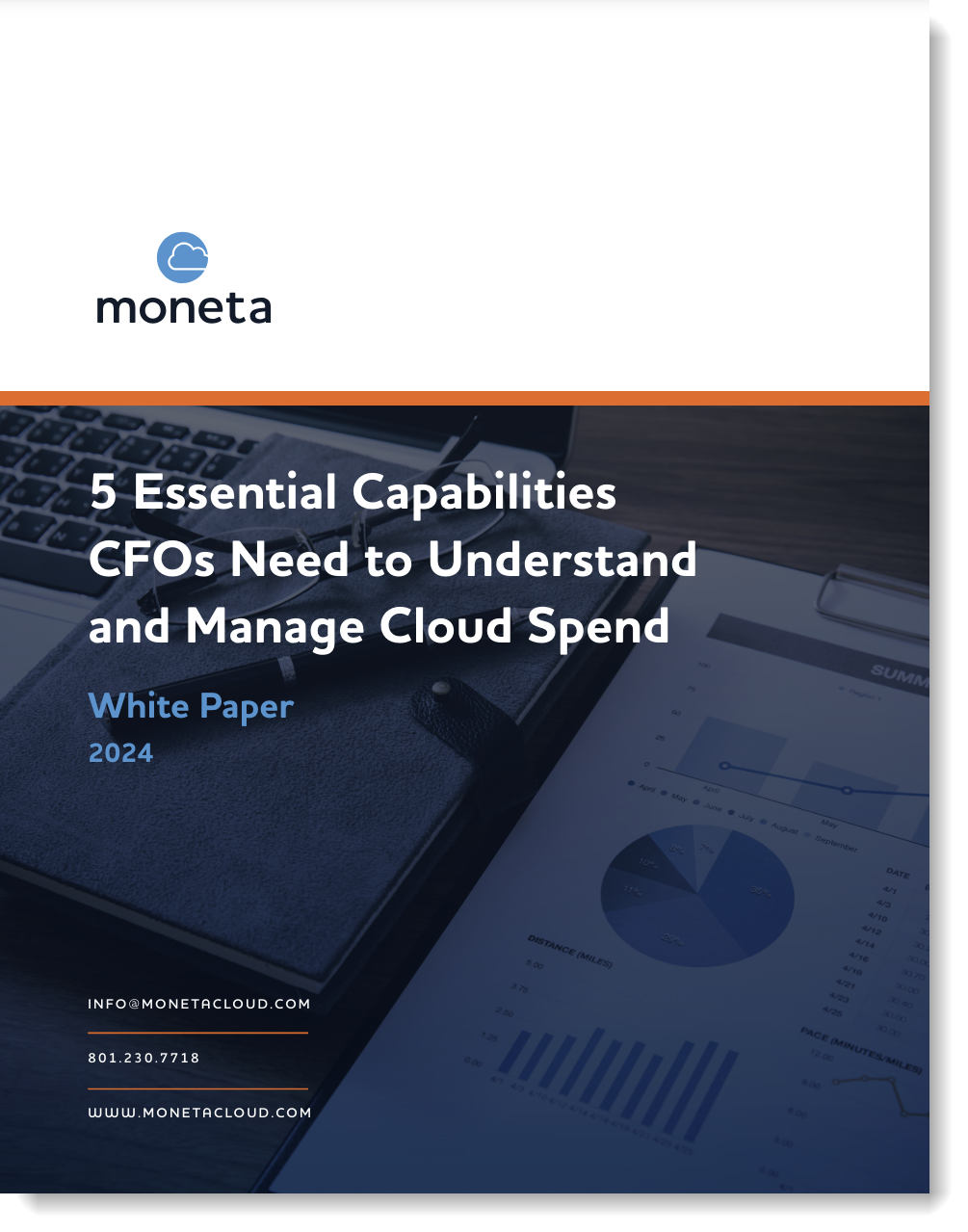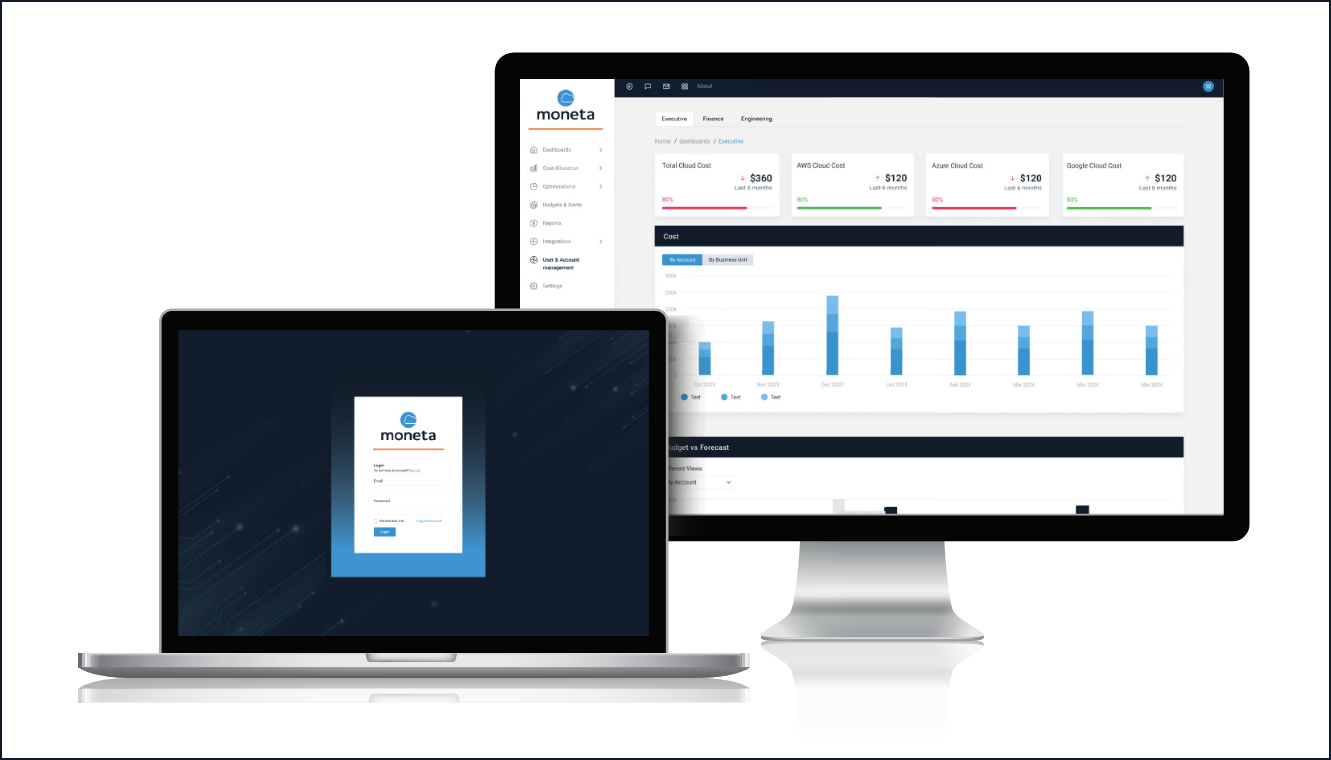Cloud computing has become indispensable to many businesses, providing unparalleled flexibility and scalability in product development and delivery. Software-as-a-service (SaaS) providers, healthcare and financial services companies, and government agencies are voracious users of Cloud computing capabilities. Cloud spending is one of the largest and fastest-growing areas of IT spending for businesses worldwide. Gartner forecasts worldwide public Cloud services spending to exceed $825 billion in 2025, growing approximately 20 percent per year for the last several years.
As businesses grow, building new products, adding new features, and serving more customers, so does Cloud spend. The historical finance-led process of obtaining purchase orders and invoice approvals for hardware and software purchases has been replaced by a pay-as-you-go procurement model, which provides organizations with access to Cloud computing resources without traditional accounting controls.
Engineering, technology, and software development organizations largely own Cloud services in most organizations. These teams are focused on growth—building new solutions and adding new capabilities to existing products—not cost savings. The financial management of Cloud resources presents a formidable challenge for companies. As seen in the chart below, in the Flexera 2024 State of the Cloud Report, based on a survey of 753 Cloud decision-makers and users worldwide, 84% of respondents indicated their primary challenge was managing Cloud spend.
Top Cloud Challenges

 Billions of dollars are wasted yearly due to idle, underused, and poorly optimized Cloud resources. In the Flexera 2024 State of the Cloud Report, respondents also reported their public Cloud waste on infrastructure-as-a-service (IaaS) and platform-as-a-service (PaaS) as 27% of their total Cloud spend, similar to the 28% reported in the 2023 report. The potential savings generated by addressing this waste is staggering.
Billions of dollars are wasted yearly due to idle, underused, and poorly optimized Cloud resources. In the Flexera 2024 State of the Cloud Report, respondents also reported their public Cloud waste on infrastructure-as-a-service (IaaS) and platform-as-a-service (PaaS) as 27% of their total Cloud spend, similar to the 28% reported in the 2023 report. The potential savings generated by addressing this waste is staggering.
Effective Cloud spend management is critical. It can improve profit margins, free up capital for innovation, or provide other competitive advantages. Yet, effective Cloud management has remained elusive for most organizations. While executive teams prioritize efficiency, where and how to gain these efficiencies is increasingly challenging when it comes to the Cloud, which frustrates both Chief Financial Officers (CFOs) and Chief Technology Officers (CTOs). Unmanaged Cloud spend directly impacts business outcomes.
Optimizing Cloud spend is highly complex due to Cloud service providers' convoluted service offerings and billing structures. The pay-as-you-go Cloud procurement model generates an unmanageable amount of data, and Cloud billing details are notoriously difficult to interpret. In addition, the current tools available for Cloud cost management are primarily designed for engineers. This leaves finance teams struggling with a lack of visibility and difficulty forecasting Cloud spend. The finance team's inability to effectively understand and manage Cloud expenses leads to friction between the finance and engineering teams, and finance cannot make intelligent Cloud spend decisions.
CFOs need to understand what their organizations are getting in return for growing Cloud spend. Today, they lack the tools to determine where waste and inefficiencies are occurring, how to stop it, and the return (or not) generated from the organization's Cloud investments. This paper explores the five essential capabilities CFOs need to manage Cloud spend effectively:
-
Visibility
-
Segmenting and tagging Cloud costs to the general ledger (GL)
-
Having a common framework and language for collaborating with engineering teams
-
Artificial intelligence (AI) to deliver precise recommendations for savings
-
Tools to select and manage discount programs
These capabilities are essential for controlling Cloud expenditures, ensuring efficient resource use, and aligning Cloud investments with organizational goals.
1. Visibility
Visibility into Cloud spend is paramount for CFOs aiming to control and optimize expenditures. Without clear insights into where and how money is being spent, it is nearly impossible to identify inefficiencies or areas for potential savings. Real-time visibility allows finance teams to monitor Cloud usage, track cost drivers, and make informed decisions.
Cloud service providers, such as AWS, Microsoft Azure, and Google Cloud Platform (GCP), offer native dashboards that provide some level of visibility. However, these dashboards are complex and require technical knowledge to interpret. Moreover, organizations often use multiple Cloud services, further complicating the task of gaining a unified view of Cloud spend.
To address these challenges, CFOs need a Cloud finance management platform that aggregates data from various providers and presents it in a user-friendly manner. The platform must provide detailed insights into Cloud usage, highlight anomalies, and offer actionable recommendations for cost optimization. Simplifying and streamlining Cloud information into a single Cloud finance management platform ensures that finance teams can efficiently track and manage Cloud expenses and eliminate waste.
2. Segmenting and Tagging Cloud Costs to the General Ledger (GL)
Segmenting and tagging Cloud costs are crucial for accurate financial reporting and accountability. Tagging is how finance teams organize spending, including Cloud spending, into various cost centers. Tagging helps automate the finance and accounting process by assigning expenses to predesignated general ledger codes. Thus, organizations' finance teams can "tag" or code each Cloud transaction to align with the naming convention used in their accounting systems. The result is Cloud spend reporting that aligns with the financial reporting construct used by the organization.
By categorizing expenses according to departments, projects, or cost centers, CFOs can ensure that Cloud spending is aligned with organizational goals and budgets. Currently, only a small percentage of Cloud spend is accurately tagged, primarily due to the complexity of Cloud service provider invoicing and the lack of suitable tools for the CFO suite. This lack of proper tagging hinders the ability to allocate costs accurately and understand their impact on an organization’s financial picture.
Implementing a robust financial transaction tagging strategy involves having automation tools that use AI to decipher Cloud services invoices and translate them into actionable data that is categorized as needed for the organization’s GL. Automated tools can also help enforce tagging policies and ensure consistency across the organization. These tools will allow finance teams to customize tags according to their financial reporting requirements, facilitating better tracking and allocating Cloud costs that align with the organization's financial reporting structure.
3. Common Framework for Collaborating with Engineering Teams
Effective management of Cloud spend requires close collaboration between finance and engineering teams. These teams have different knowledge bases, priorities, and perspectives, which can lead to friction and inefficiencies. A common framework and language for collaboration can bridge this gap, enabling both teams to work towards shared goals.
Finance teams lack the technical knowledge to fully understand Cloud investments, while engineering teams are generally not well-versed in financial management. This can result in miscommunication, misaligned objectives, and suboptimal decision-making. Today, technical teams struggle to provide finance teams with the data and answers they require to understand Cloud spend and what the organization is getting in return for increasing costs.
Establishing a common framework involves having a Cloud finance management platform that facilitates this communication, establishing shared metrics, and facilitating collaborative decision-making processes. This framework must foster a culture of collaboration and mutual understanding. Tools that translate technical data into financial terms facilitate this process, ensuring that both teams have the information they need to make informed decisions.
4. Artificial Intelligence for Optimizing Cloud Spend
AI offers powerful capabilities for optimizing Cloud spend. AI-driven tools can analyze large volumes of data, identify patterns, and provide precise recommendations for cost savings. These recommendations can include optimizing resource allocation, right-sizing instances, and eliminating idle resources.
Implementing AI for Cloud cost optimization requires access to high-quality data and advanced analytical tools. Additionally, organizations must ensure their teams have the skills to interpret and act on AI-generated insights.
A Cloud financial management platform that integrates AI capabilities for continuous monitoring and optimization of Cloud spend is essential to eliminating Cloud waste. The platform must provide real-time alerts, predictive analytics, and actionable recommendations, enabling proactive cost management. By adopting AI-driven tools, CFOs can ensure that Cloud investments deliver maximum value and efficiency.
5. Tools to Select and Manage Discount Programs
Cloud service providers offer ways for organizations to obtain substantial cost savings by reducing the rate of the Cloud services used by organizations. These programs include reserved instances (RIs), savings plans, service-specific discounts, and enterprise-level discount agreements, which can significantly reduce Cloud costs.
Selecting the proper programs requires a deep understanding of Cloud usage patterns and contractual terms. The complexity of these programs often necessitates specialized knowledge and expertise, which may not be readily available within the finance team.
To maximize the benefits of these discount programs, CFOs should look for a Cloud financial management platform that includes tools to analyze Cloud consumption data, evaluate the potential savings of different discount programs, and recommend suitable savings structures to maximize Cloud investment cost benefits. These tools should provide insights into the optimal mix of discount program options that the CFO can easily understand and evaluate.
Use Case Demonstrating the Value of a Cloud Financial Management Platform
The team at Moneta interviewed a senior director of DevOps at a cybersecurity software company to illustrate the benefits of using a Cloud financial management platform that finance professionals understand. The organization spent $15 million yearly on Cloud services and faced a growing problem. The company had completed multiple acquisitions, resulting in its Cloud environment becoming unwieldy and lacking oversight.
The organization’s finance team asked the senior director of DevOps, the de facto Cloud cost owner, to implement a strategy around Cloud cost tagging that would provide the visibility needed for the organization’s financial operations.
The finance team was concerned about runaway Cloud costs due to years of technical debt and a lack of cost allocation visibility for each of the organization’s products and services. While the DevOps team was focused on building great security products, it acknowledged that its resource tagging strategy needed improvement to gain the insights necessary to understand cost allocation and control Cloud spend. There was sparse and inconsistent tagging across old and new infrastructure, meaning the DevOps and the finance teams had poor visibility into Cloud spend by product, team, environment, and other critical dimensions. This lack of attribution made it impossible to optimize their RI and savings plans (SP) coverage, identify waste, and understand the true cost of goods sold (COGS).
After evaluating several FinOps partners, the organization selected a third-party Cloud services consultant based on their expertise in implementing financial operations strategies. Together, they outlined a plan to design and implement a tagging strategy to provide the metadata needed to manage their investments effectively.
The first step was gaining visibility through comprehensive tagging. The team implemented granular resource tagging across all old and new infrastructure to attribute spending by business dimensions. The team also designed a tagging taxonomy that met the needs for visibility while maintaining consistency. With reliable attribution, the organization gained insights to right-size overprovisioned resources, purchase optimal RIs/SPs, identify waste, and forecast Cloud spend more accurately.
Within three months of launching the new financial operations strategy, the team gained complete visibility into Cloud spend. RI coverage increased by over 50%, saving nearly $3 million annually. The organization’s CFO finally had the visibility needed to show the executive team the products and services that cost far more than they generated in revenue and were candidates for sunsetting.
The Advantages of a Cloud Financial Management Platform
The dramatic growth of software applications leveraging Cloud technologies has caused a skyrocketing in Cloud spend. Much of this spend is wasted primarily because finance teams lack the tools or expertise to manage it effectively. This challenge needs to be addressed.
A Cloud Technology Financial Management Platform designed specifically for finance professionals revolutionizes how organizations manage and optimize their Cloud spend. Leveraging cutting-edge AI and Machine Learning (ML) capabilities, the platform can help address the critical challenge of translating complex Cloud financial data into a language that finance teams can understand and act upon. A seamless, AI-powered Cloud financial management solution can empower finance teams to take control of their Cloud financial operations without requiring deep technical expertise.
By harnessing the power of AI, a Cloud financial management platform automatically translates intricate Cloud cost data into actionable insights explicitly tailored for finance professionals. This transformative technology enables finance teams to gain clear visibility into their Cloud spend, identify cost-saving opportunities, easily implement robust Cloud governance frameworks, and make data-driven decisions to move their business forward.
The platform's AI-driven capabilities go beyond simple cost reporting, providing intelligent recommendations and automated actions to streamline the Cloud financial management process. The platform’s innovation lies in its ability to leverage AI to learn from an organization's Cloud usage patterns, continuously refining its recommendations and adapting to the evolving needs of finance teams.
This unlocks significant value for organizations, driving substantial cost savings, improving operational efficiency, and enabling finance professionals to become strategic partners in managing an organization’s use of the Cloud. By empowering teams with the tools and insights they need to manage Cloud spending effectively, finance teams can now set new standards for financial accountability of Cloud spend.
Managing Cloud spend is a critical challenge for CFOs. It requires a combination of visibility, accurate cost allocation, collaboration with engineering teams, AI-driven optimization, and effective management of discount programs. Through these capabilities, CFOs can gain control over Cloud expenditures, reduce waste, and ensure that Cloud investments align with organizational goals.
The Cloud's complexity and dynamic nature demand specialized tools and strategies tailored for financial management. Investing in the right tools and fostering collaboration between finance and engineering teams can help organizations unlock significant cost savings and drive strategic value from their Cloud investments. As Cloud computing continues to grow and evolve, these capabilities will be essential for maintaining an organization’s financial health and achieving long-term business success.
Learn more about how Moneta’s Cloud Technology Financial Management Platform can help your organization transform Cloud FinOps at www.monetacloud.com.






